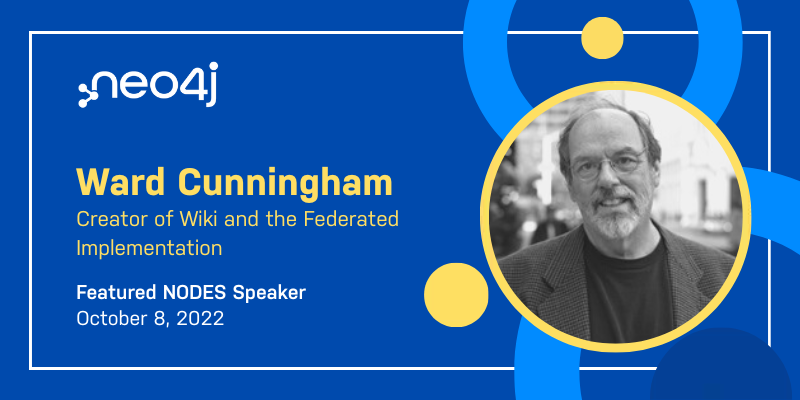This Week in Neo4j: RDF, SPARQL, Pathfinder Algorithms, Graph Data Science, Predictive Analytics, and More

Sr. Manager, Developer Community
3 min read

In this week’s featured article, Agustin Martinez presents a comprehensive overview of RDF (Resource Description Framework) and LPG (Labeled Property Graph) models. He describes the various elements that exist in both models, and reviews the languages used to model, ingest, query, and validate data. There are links to source materials throughout, so it can be used as a point of departure for further research.
To help expand your graph skills leading up to NODES 2022, expert practitioners are offering the Road to NODES workshops. In these free two-hour workshops, you can learn about Apache Hop, Graph EDA, Apache Arrow, healthcare analytics, and Neo4j graph database. Register.
Cheers,
Yolande Poirier
PS: Be sure to register for NODES 2022 soon. The 24-hour conference will be live, with local and international speakers sharing their expertise in your time zone. Register for free!
FEATURED NODES SPEAKER: Ward Cunningham
Ward Cunningham has served as CTO, Director, Fellow, Principal Engineer, and Inventor. He is best known for creating Wiki. He leads an open-source project rebuilding Wiki to solve more complex sharing situations addressing some of society’s toughest problems. He co-authored (with Bo Leuf) a book about wikis, “The Wiki Way,” and invented the Framework for Integrated Tests.
Ward founded movements in object-oriented, agile software, extreme programming, and pattern languages. His session at NODES 2022 is: Hypertext Super Collaborator. Don’t miss it: save your seat now!
You can also follow him on Twitter.

ANALYTICS: A Machine Learning Innovation in Predictive Analytics
Nicolas Rouyer demonstrates the predictive capabilities of Neo4j Graph Data Science on the CORA dataset of scientific publications to predict the category of a given research paper. Before diving into the demo, he presents a nicely structured introduction to the graph data science platform.
KNOWLEDGE GRAPH: The Future of Data Structures
In this post, Hugo Jiménez describes the RDF standard model and SPARQL protocol. He discusses the advantages of knowledge graphs in the areas of data portals, semantic information on websites, search, question answering, and knowledge exploration.
LIVE: Pathfinding Algorithms Using Neo4j
LEARNING: What Is a Graph Database?
INDUSTRIAL STRENGTH: Combining Three Biochemical Datasets in a Graph Database
GDS: Neo4J Graph Data Science With Verifiable Credential Data
TWEET OF THE WEEK: @tlarsendataguy
Don’t forget to retweet if you like it!
Occasionally, I rest from building our SAP knowledge graph in Neo4j by running test queries. By doing so, I validate the data and practice my (lackluster) Cypher skills.
I like this one. It identifies companies we bought materials from, and also sold them the same materials. pic.twitter.com/kdhrfji3sd
— Thomas Larsen (@tlarsendataguy) September 27, 2022
… Of Special Interest
- This slide deck gives an overview of Jennifer Reif’s presentation on building Java applications on Neo4j. Check it out!
- Graphville is a graph educational platform for beginners learning the Neo4j graph database and Cypher. They just released a new Neo avatar, based on “The Matrix.”








